FluTrailMap: Applying Social Networks to Highly Pathogenic Avian Influenza
University of Leeds
Principal Investigator Dr Alastair I. Ward & Dr Josh Firth
Animal Social Networks and Female Extra-pair Paternity
NERC Quantitative Modeling in Ecology and Evolution (QMEE), Imperial College London. 2019 - July 2023.
Supervised by Dr Julia Schroeder, Dr Tim Evans & Professor Terry Burke
All animal life requires some degree of social association to survive and reproduce. While sexual reproduction depends on two individuals interacting, individuals must maintain temporary social connections to reach this point. The degree to which an individual interacts socially - their sociality - determines the maintenance of social associations, which is essential for their survival and reproductive success, i.e., life history. However, an individual’s behavior is not solely based on their individual preference, but also on the preferences of their social associates and environmental context.
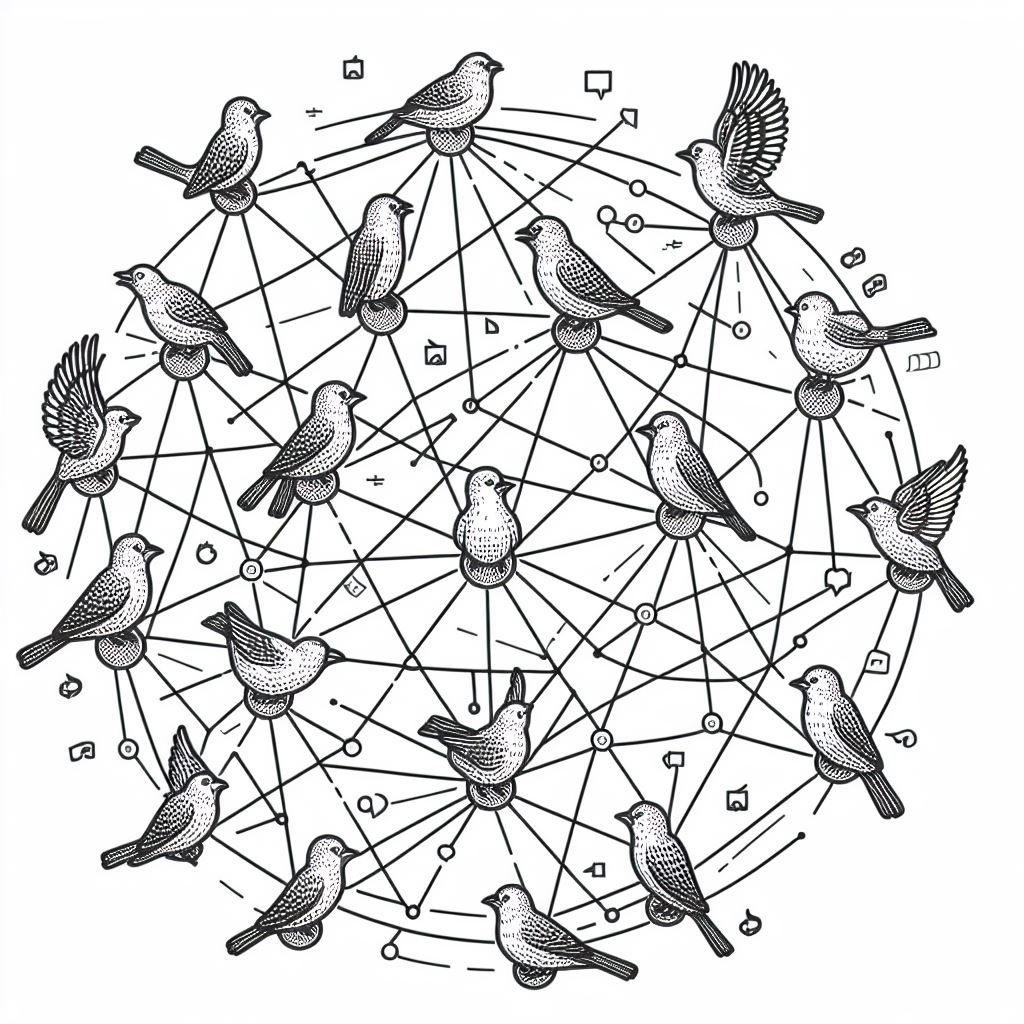
My doctoral research investigated the evolutionary ecology of social traits and their influence on reproductive decision-making, with a focus on female extra-pair reproduction. Female promiscuity presents a paradox for evolutionary ecologists, as it carries obligatory costs while offering limited benefits to both her and her offspring. Our study uses the Lundy Island house sparrow system, a long-term research project with a complete genetic pedigree, to test hypotheses related to social behavior and life history.
Below, I have outlined the primary themes of my PhD research, along with links to related research outputs, including published works and unpublished thesis chapters:
- The definition of an association between individuals visiting bird feeders. This is purely methodological, as good definitions already exist for other systems, but those definitions are not well suited to the gregarious behaviour of house sparrows and similar systems.
Alex H.H. Chan, Jamie Dunning, Kristina Beck, Terry Burke, Heung Ying Janet Chik, Daniel Dunlevy, Tim S. Evans, André Ferreira, Babette Fourie, Simon C. Griffith, Friederike Hillemann & Julia Schroeder. 2023. Animal social networks are robust to changing association definitions. [Submitted]. (Joint first authorship).
- The link between non-breeding sociality and long-term reproductive fitness, particularly in terms of genetic contributions to the population. Although fitness benefits derived of non-breeding sociality have been described elsewhere, they tend to be short-term measures (paired status, eggs laid, chicks fledged etc.). See links below:
Jamie Dunning, Terry Burke, Alex H.H. Chan, Heung Ying Janet Chik, Tim S. Evans & Julia Schroeder. 2022. Opposite-sex associations are linked with annual fitness, but sociality is stable over lifetime. Behavioral Ecology. https://doi.org/10.1093/beheco/arac124
Vita Ziva Alif, Jamie Dunning, H.Y. Janet Chik, Terry Burke & Julia Schroeder. 2022. What is the best fitness measure in wild populations? A case study on the power of short-term fitness proxies to predict reproductive value. PlOS One. https://doi.org/10.1371/journal.pone.0260905
- The role of individual sociality in reproductive decision-making, both within and outside of established pair bonds, with a particular focus on the female perspective.The suggestion that the paradox of female extra-pair behavior can be explained by her social environment is intuitive, but the underlying mechanisms are still not well understood. We are particularly interested in exploring the drivers of apparently obligate, female extra-pair paternity (EPP), which may be influenced by genes that are beneficial to male reproductive success. Recent studies have suggested a link between non-breeding sociality and female EPP, but empirical evidence from closed systems is still scarce. We have considered these questions using quantitative genetic methods:
Sarah Dobson, Jamie Dunning, Terry Burke, Heung Ying Janet Chik & Julia Schroeder. 2023. Indirect genetic effects increase heritability estimates for male and female extra-pair reproduction. Evolution. https://doi.org/10.1093/evolut/qpad100. (Joint first authorship).
Jamie Dunning, Terry Burke and Julia Schroeder. 2023. Divorce is linked with extra-pair paternity in a monogamous passerine. Journal of Avian Biology. https://doi.org/10.1111/jav.03171
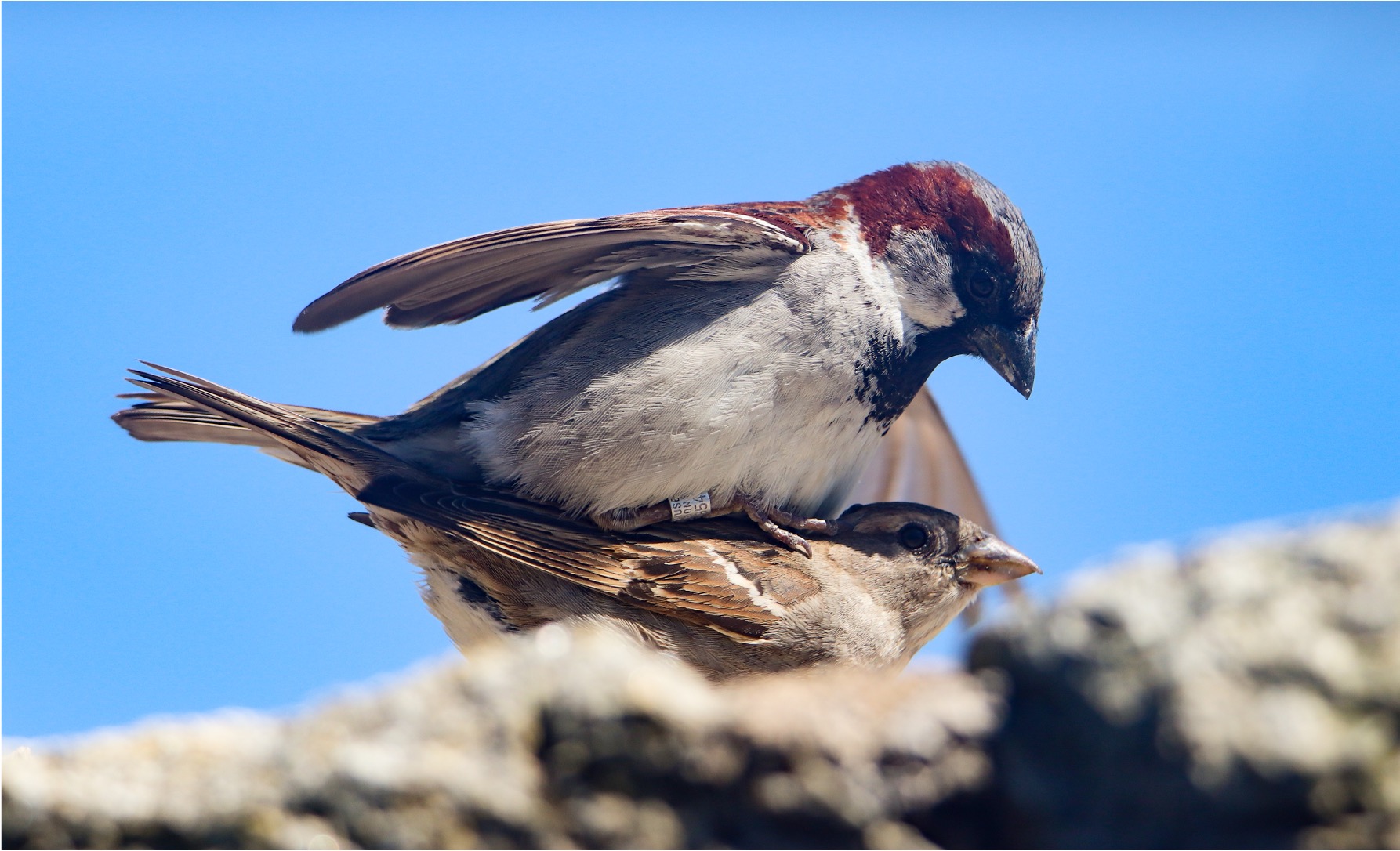
Behaviour and Population Dynamics of Twite in Britain
In collaboration with the RSPB’s Twite Recovery Project. 2013 - ongoing.
Formerly, University of Nottingham. Supervised by Dr Kate Durrant and Professor Angus Davison. 2017 - 2018.
Twite linaria flavirostris breed in Northern Europe, including, at their southern extent, in the English Pennines. The number of twite in England has declined from ~164 breeding pairs in 2013, a 75% decline since a baseline survey in 1999, to <15 in 2021. Since 2013, I have coordinated a project monitoring twite breeding in England, and more recently, on a healthier population wintering on the mull of Oa, Islay, Scotland. In 2017, these data combined were the subject of my MRes degree at the university of Nottingham, where I described the behaviour and phylogenetic structure of twite populations in western Europe (with mixed success).
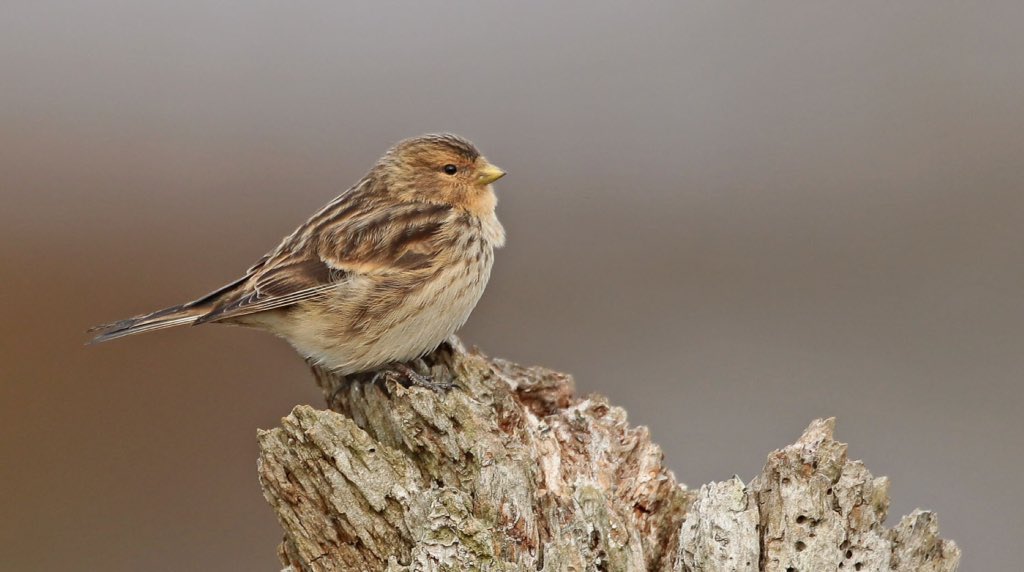
A twite from West Yorkshire, wintering at Thornham harbour, Norfolk. L Bunyan. 2018
Because twite are difficult to monitor effectively, they do not reach the significance threshold for inclusion in conventional population monitoring, we rely on dedicated surveys and a coordinated monitoring effort. My research interest in twite focuses on differences between spatially-isolated groups in the context of broad conservation measures.
I coordinated a long-term study on individual survival at an isolated site in Central England, for which we had exceptional life history data. This study was the subject of Ismini Gkourtsouli-Antoniadou’s CMEE MRes research in 2019 (Imperial College London). See links below:
Ismini Gkourtsouli-Antoniadou, Steven R. Eweing, George Hudson, Micheal A. Pearson, Julia Schroeder, Peter E. Welch, Nick Wilkinson & Jamie Dunning. 2023. Age-specific survival in an English Twite population. Bird Study. https://doi.org/10.1080/00063657.2023.2166459
Jamie Dunning, Tom Finch, Angus Davison & Kate L. Durrant. 2020. Population-specific migratory strategies of Twite Linaria flavirostris in Western Europe. Ibis. https://doi.org/10.1111/ibi.12791
All of the data described above can be made available for further research on request. Likewise colour-ringed twite in England (or beyond) can be reported to the appropriate project, or via the twite network working group.
Avian Signals in the Context of Light Environment
I am interested in how birds use their light environment to communicate information. I have published a series of linked papers on this topic, mostly relating to signals which were poorly known in otherwise well-studied species, the Atlantic puffin and the Eurasian Woodcock. I have also worked on a broader project which used a large dataset of plumage traits to build on my previous research to explore non-sexual (i.e. environmental) drivers of avian plumage contrast. I have grouped three studies here:
1) Photolumiescence in the Bill Plate of the Atlantic Puffin Fratercula arctica. 2018.
In 2018, I described the florescent properties of the breeding bill plate of the Atlantic puffin, that fluoresces yellow-green under ultra-violet light. Although the paper itself was short and broadly descriptive, it attracted wide-spread media attention and subsequently, is ranked #1 for attention score (Altmetric) within the Bird Study journal.
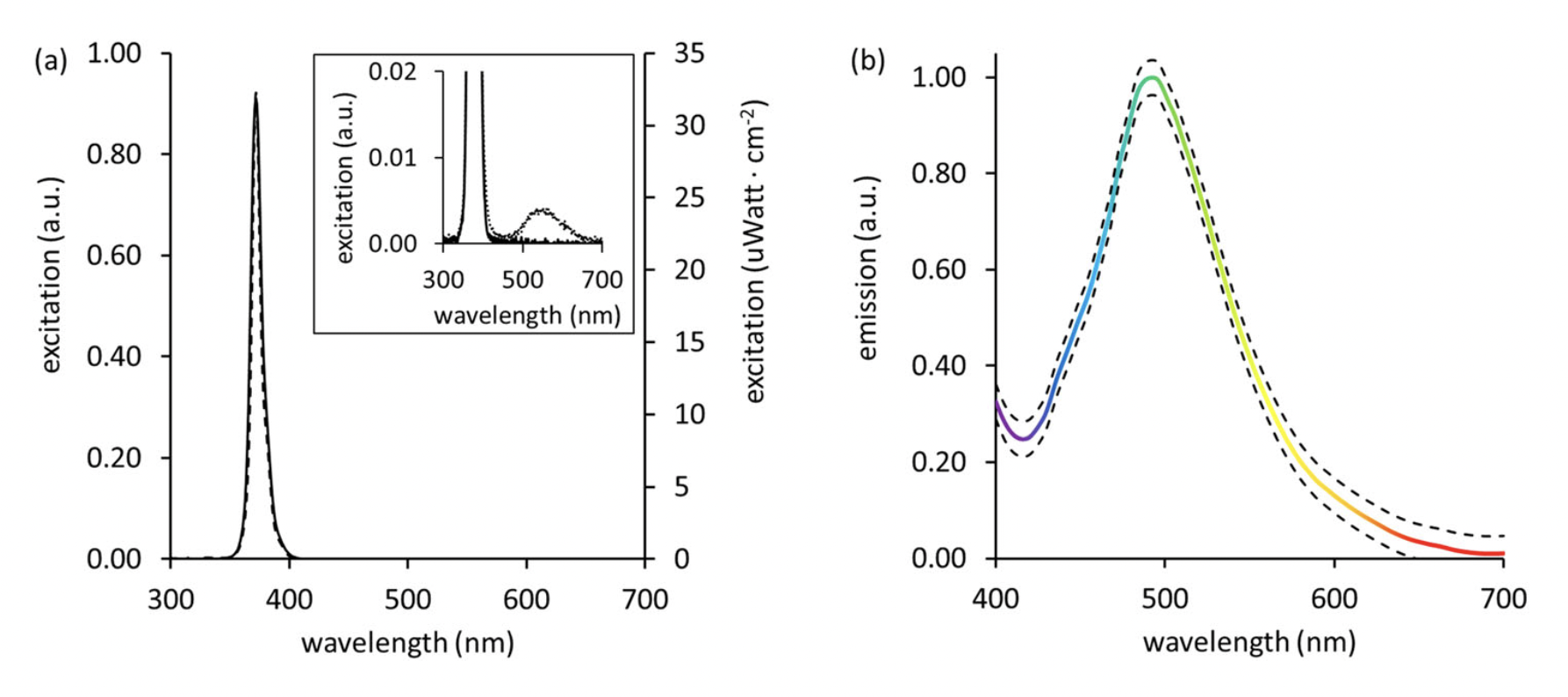
We first described the apparent florescence in the bill plate of a freshly dead puffin, then from live animals under license. We found weak florescence at ~500nm when the bill plate was exposed to UV light (~365nm). Similar observation were made earlier and later in the closely related Auklets. We considered the possibility that the described florescence is an artifact of the development process (perhaps a bio-accumulation of Green fluorescent protein (GFP), abundant in marine copepods), but also that it might serve a role in communication. The communication hypothesis is complex, particularly because it seems unlikely that florescence, specifically the emission spectra, is detectable in natural light enviroments. However, this does not consider how UV absorption might be interpreted in the context of avian vision, and recent research has suggested some degree of detection.
Jamie Dunning, Anthony W. Diamond, Stephen E. Christmas, Emma-Louise Cole, Rebecca L. Holberton, Hannah J. Jackson, Kevin G. Kelly, Dean Brown, Indira R. Rivera. & Daniel Hanley. 2018. Photoluminescence in the bill of the Atlantic Puffin Fratercula arctica. Bird Study. https://www.tandfonline.com/doi/full/10.1080/00063657.2018.1563771
2) How Woodcocks Produce the Most Brilliant White Plumage Patches Among the Birds. 2021 - 2023.
Colour is fundamental to avian communication where visual signals are common, although the mechanisms by which such signals are maintained vary. Unlike pigment based colouration, white plumages are produced by internal structures that incoherently scatter light.
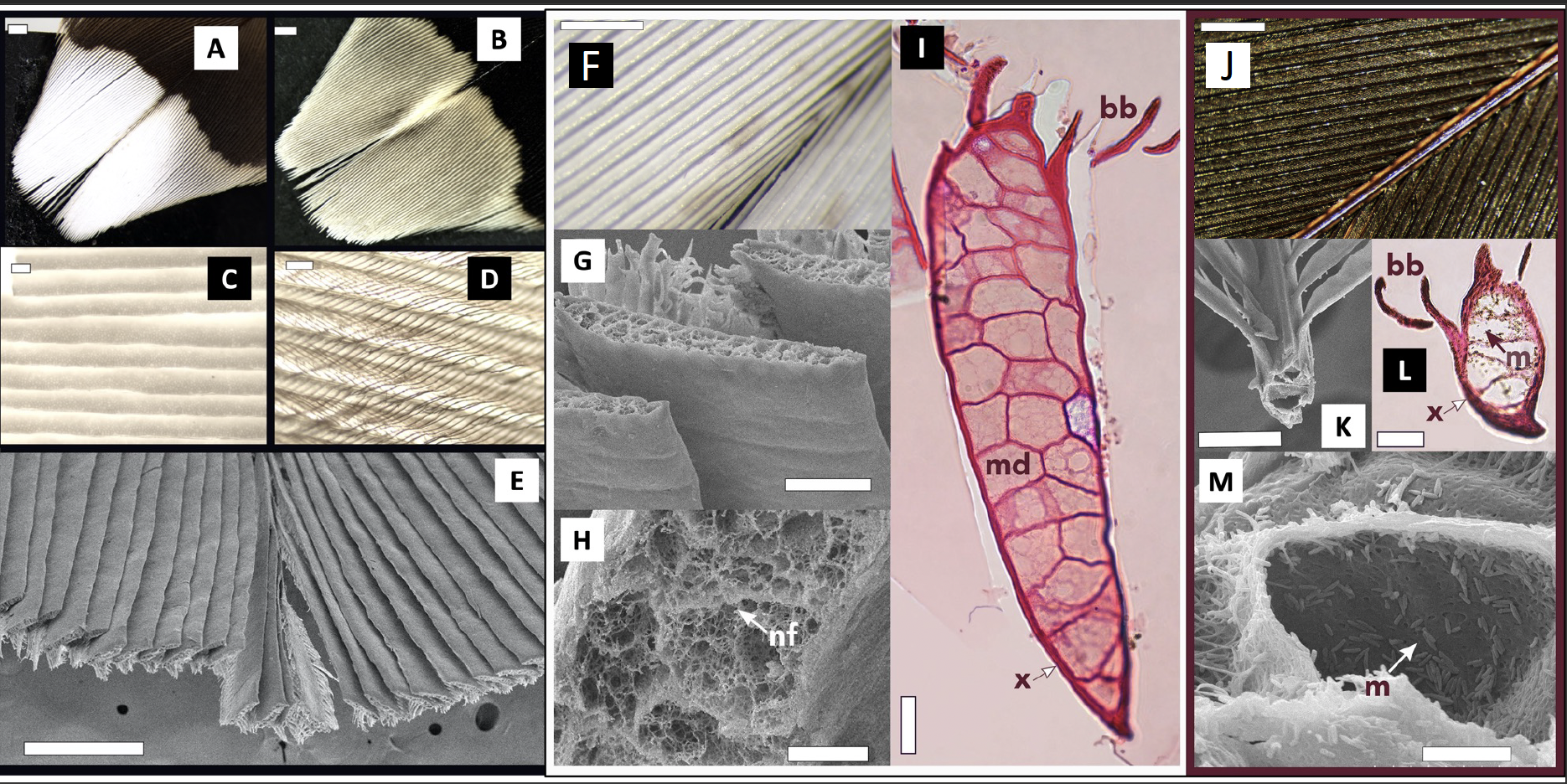
We described how the tail feather spots of the woodcocks Scolopax sp. are among the most brilliant white patches among the birds - that is, they they reflect more light than other currently measured white plumage. The Eurasian woodcock does this through a series of adaptations to structure of the tail feather tips: At the macro-scale, the rami are broadened and flattened, preventing light from passing through the feather vane, but also, are positioned at the optimum angle for light reflectance; At the micro-scale, melanosomes that create and store the melanin - the pigment responsible for the colour of animal feathers, skin, hair and eyes - are absent. Instead, we described an complex of air–pockets nd nano-structures to increase the surface area and scatter light. We described the reflectance spectra against a database of other white plumages.
- Jamie Dunning, Anvay Patil, Liliana D’Alba, Alexander L Bond, Gerben Debruyn, Ali Dhinojwala, Matthew Shawkey & Lukas Jenni. 2023. How Woodcocks Produce the Most Brilliant White Patches Among the Birds. Journal of the Royal Society Interface. https://doi.org/10.1098/rsif.2022.0920
3) Non-Sexual Influecnes on Avian Plumage Contarst. 2023 -
This study builds on the hypothesis that woodcock evolved brightly contrasting plumage patches in response to a need to signal in a dark environments but from a macro-ecological perspective. We combined two databases, one of avian plumage colour measurements and another on ecological traits to explore how light environment, and other non-sexual variables, influence plumage contrast in the context of avian perception.
- Jamie Dunning, Catherine Sheard and John A. Endler. 2023. The Effects of Habitat Structure and Behaviour on Avian Plumage Contrast [In Prep].
Bird Survey and Assessment Steering Group
Developed under direction of the Bird Survey & Assessment Steering Group. 2018 -
Almost all planning applications in the UK and Ireland require Ecological Impact Assessment (EcIA), carried out by a trained ecologist, prior to approval. However, for this fine-scale application bird survey guidance was lacking. Commercial ecologists have instead tended to use amended territory-mapping methodologies developed by the BTO for national-scale population monitoring (for example, BBS or CBC).
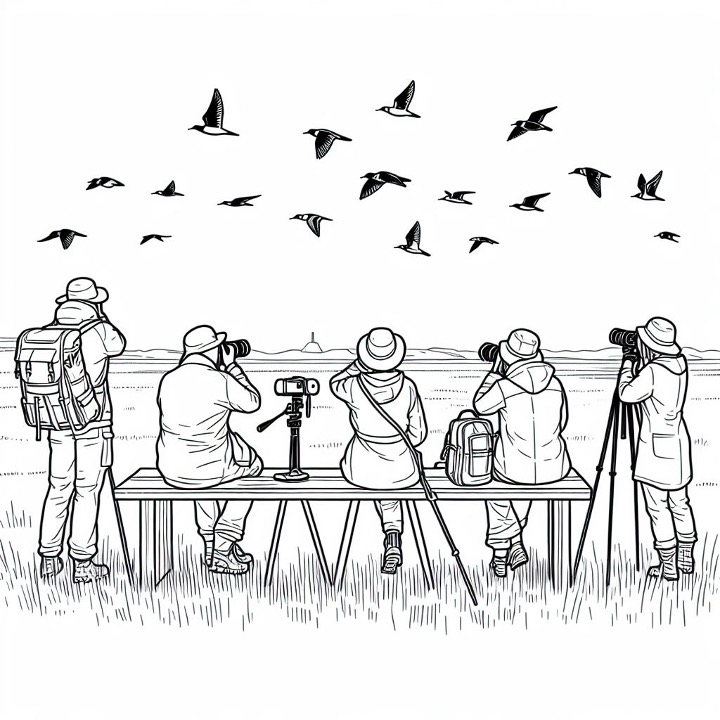
I developed a new set of proposed guidelines in 2018, while working for CSA, and in collaboration with the BTO. These guidelines have since been developed, in conjunction with the Bird Survey & Assessment Steering Group and published online. Furthermore, the BTO have developed a specific data tool that works in conjunction with the guidelines, and allows ecologists to quantify the relative importance of avian diversity on a land parcel against a series of increasing scales (from local ward to national).
In March 2022 I founded a small ornithological spin-out from this project -Skopeo Ltd.- with two aims: First, to address a specialist knowledge gap in the commercial sector, as identified by a CIEEM in 2021; but also, to reduce the carbon footprint of commercial bird surveys, by linking commercial ecologists with local ornithologists.
See below:
- Bird Survey & Assessment Steering Group. 2019. Bird Survey Guidelines for assessing ecological impacts, v.0.1.0 [2023].https://birdsurveyguidelines.org
Also see: